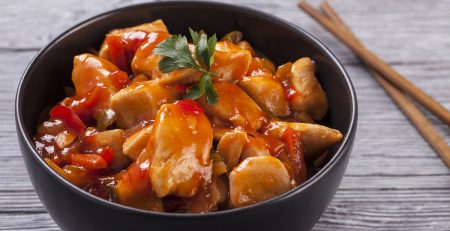Food Navigator USA Salutes Malaysian Cuisine as the Next Big Flavor Trend
The hugely well hidden flavors of Malaysia’s multi-cultural cuisine are exposed to the still uninformed global consumer. Ms. Hennessey aptly describes how the cultures of the people, namely the Malays, Chinese, Indians, Nonya and others indigenous to Malaysia, spectacularly come together and create a lip smacking tantalizing aroma that begets little culinary comparison elsewhere. No doubt other Asian cuisine such as Thai, Chinese, Indian and even Vietnamese have found their niche but the burst that will come from Malaysia promises a gold mine not only for the restaurant industry but also for food processors and supermarket trotting consumers.
Malaysian cuisine has just the right amount of fatty content and texture in each of its preparation. After all the right fat always enhances the organoleptic properties of foods. The fat component in most Malaysian cuisine will invariably be palm oil based. Indeed, almost 80% of the daily fat consumption in the country is palm oil derived. The population here has been consuming palm oil as a stable fat for several decades and none the worse for it. The health benefits of palm oil are many indeed (balanced fat composition, rich in tocotrienols, with the red oil naturally colored by pro-Vitamin A carotenes). It is also matched by the fact that the oil itself is presented bland, without a flavor or odor of its own.
This is actually one of its many plus points and when foods are cooked with palm oil, it brings out the flavors and colors of the food so beautifully. Malaysian chefs will use nothing but liquid (gold) palm olein to fry their foods to achieve the desired crunchy texture of fried foods. Food processors have also learnt this trick and long adapted palm oil for fried packaged food products, with assurances of quality and longer keep ability. Little wonder, tourists in the country are often heard quoting that “fast foods in Malaysia are more flavorful and tastier than at home”. The hawker centers are “haven sent gourmet outings”, all brought to their elements when cooked with palm oil.
Palm oil is available in several forms fitting into both the solid and liquid edible oil segments that are so essential in a gourmet meal. One clear benefit is the observation that while the rest of the world is still wrestling towards zero trans bakery and frying shortenings, Malaysian cuisine simply entrenched itself with palm based fats. Simple. Palm oil requires no hydrogenation and hence trans fatty acids are non- existent. The result, almost 1 in 6 fat based products in the supermarkets is palm based as the healthier option compared to trans fats.
As the world becomes increasingly exposed to the flavor trains from Malaysian cuisine, let us remember that its very best will only be brought out by palm oil. Our Malaysian chefs will tell you that substituting palm oil with any other oils is like snipping out your taste buds. After all, why switch from the original recipes especially when the fat content is proven a healthy and beneficial product, produced sustainably with the utmost care for quality. The flavors of Malaysian cuisine and Malaysia palm oil fit like a glove in your hands! Enjoy the Malaysian Flavor train that is yet to arrive!
Article credit: Dr. Kalyana Sundram, MPOC






Leave a Reply